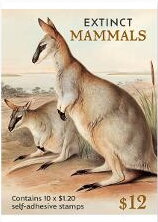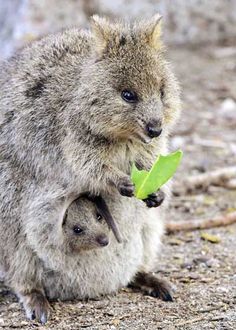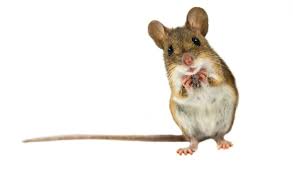Booklet: Extinct Mammals of Australia (Australia 2023)
Extinct Mammals of Australia (Australia 2023)
01 June (Australia ) within release Extinct Mammals of Australia (2023) goes into circulation Booklet Extinct Mammals of Australia face value 10*1.20 Australian dollar
| Booklet Extinct Mammals of Australia in catalogues | |
|---|---|
| Colnect codes: | Col: AU 2023.06.01-04 |
Booklet is square format.
Contains three sets of three designs and one additional stampAlso in the issue Extinct Mammals of Australia (2023):
- Booklet - Extinct Mammals of Australia face value 10*1.20;
- Souvenir Sheet - Extinct Mammals of Australia face value 3*1.20;
- Stamp - Long-tailed Hopping-mouse (Notomys longicaudatus) face value 1.20;
- Stamp - Long-tailed Hopping-mouse (Notomys longicaudatus) face value 1.20;
- Stamp - Thylacine (Thylacinus cynocephalus) face value 1.20;
- Stamp - Thylacine (Thylacinus cynocephalus) face value 1.20;
- Stamp - Toolache Wallaby (Notamacropus greyi) face value 1.20;
- Stamp - Toolache Wallaby (Notamacropus greyi) face value 1.20;
Booklet Extinct Mammals of Australia it reflects the thematic directions:
Mammals are any vertebrates within the class Mammalia (/məˈmeɪli.ə/ from Latin mamma "breast"), a clade of endothermic amniotes distinguished from reptiles (including birds) by the possession of a neocortex (a region of the brain), hair, three middle ear bones and mammary glands. All female mammals nurse their young with milk, secreted from the mammary glands. Mammals include the largest animals on the planet, the great whales. The basic body type is a terrestrial quadruped, but some mammals are adapted for life at sea, in the air, in trees, underground or on two legs. The largest group of mammals, the placentals, have a placenta, which enables the feeding of the fetus during gestation. Mammals range in size from the 30–40 mm (1.2–1.6 in) bumblebee bat to the 30-meter (98 ft) blue whale. With the exception of the five species of monotreme (egg-laying mammals), all modern mammals give birth to live young. Most mammals, including the six most species-rich orders, belong to the placental group. The largest orders are the rodents, bats and Soricomorpha (shrews and allies). The next three biggest orders, depending on the biological classification scheme used, are the Primates (apes and monkeys), the Cetartiodactyla (whales and even-toed ungulates), and the Carnivora (cats, dogs, seals, and allies).
Marsupials are a diverse group of mammals belonging to the infraclass Marsupialia. They are natively found in Australasia, Wallacea, and the Americas. One of the defining features of marsupials is their unique reproductive strategy, where the young are born in a relatively undeveloped state and then nurtured within a pouch on their mothers abdomen
A mouse (pl.: mice) is a small rodent. Characteristically, mice are known to have a pointed snout, small rounded ears, a body-length scaly tail, and a high breeding rate. The best known mouse species is the common house mouse (Mus musculus). Mice are also popular as pets. In some places, certain kinds of field mice are locally common. They are known to invade homes for food and shelter.



